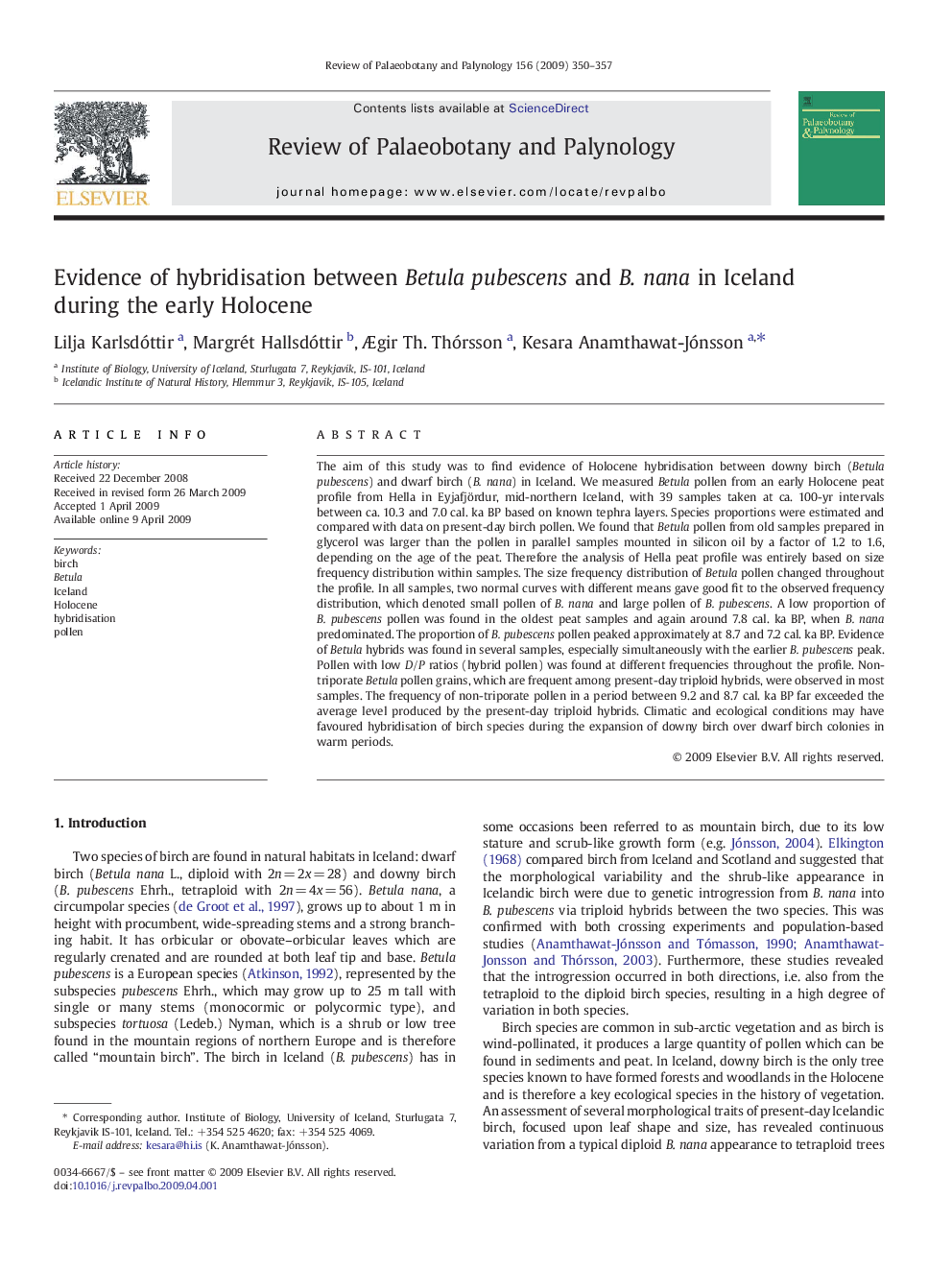| کد مقاله | کد نشریه | سال انتشار | مقاله انگلیسی | نسخه تمام متن |
|---|---|---|---|---|
| 4750789 | 1642554 | 2009 | 8 صفحه PDF | دانلود رایگان |
عنوان انگلیسی مقاله ISI
Evidence of hybridisation between Betula pubescens and B. nana in Iceland during the early Holocene
دانلود مقاله + سفارش ترجمه
دانلود مقاله ISI انگلیسی
رایگان برای ایرانیان
کلمات کلیدی
موضوعات مرتبط
مهندسی و علوم پایه
علوم زمین و سیارات
فسیل شناسی
پیش نمایش صفحه اول مقاله

چکیده انگلیسی
The aim of this study was to find evidence of Holocene hybridisation between downy birch (Betula pubescens) and dwarf birch (B. nana) in Iceland. We measured Betula pollen from an early Holocene peat profile from Hella in Eyjafjördur, mid-northern Iceland, with 39 samples taken at ca. 100-yr intervals between ca. 10.3 and 7.0Â cal. ka BP based on known tephra layers. Species proportions were estimated and compared with data on present-day birch pollen. We found that Betula pollen from old samples prepared in glycerol was larger than the pollen in parallel samples mounted in silicon oil by a factor of 1.2 to 1.6, depending on the age of the peat. Therefore the analysis of Hella peat profile was entirely based on size frequency distribution within samples. The size frequency distribution of Betula pollen changed throughout the profile. In all samples, two normal curves with different means gave good fit to the observed frequency distribution, which denoted small pollen of B. nana and large pollen of B. pubescens. A low proportion of B. pubescens pollen was found in the oldest peat samples and again around 7.8Â cal. ka BP, when B. nana predominated. The proportion of B. pubescens pollen peaked approximately at 8.7 and 7.2Â cal. ka BP. Evidence of Betula hybrids was found in several samples, especially simultaneously with the earlier B. pubescens peak. Pollen with low D/P ratios (hybrid pollen) was found at different frequencies throughout the profile. Non-triporate Betula pollen grains, which are frequent among present-day triploid hybrids, were observed in most samples. The frequency of non-triporate pollen in a period between 9.2 and 8.7Â cal. ka BP far exceeded the average level produced by the present-day triploid hybrids. Climatic and ecological conditions may have favoured hybridisation of birch species during the expansion of downy birch over dwarf birch colonies in warm periods.
ناشر
Database: Elsevier - ScienceDirect (ساینس دایرکت)
Journal: Review of Palaeobotany and Palynology - Volume 156, Issues 3â4, September 2009, Pages 350-357
Journal: Review of Palaeobotany and Palynology - Volume 156, Issues 3â4, September 2009, Pages 350-357
نویسندگان
Lilja Karlsdóttir, Margrét Hallsdóttir, Ãgir Th. Thórsson, Kesara Anamthawat-Jónsson,